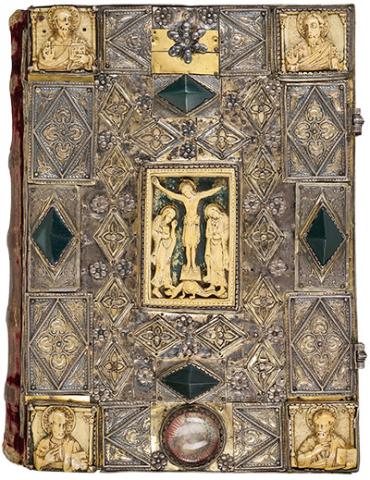
Treasure bindings, like medieval reliquaries, were often modified and added to over the centuries. Here, only the ivory Crucifixion may have been part of the original binding. Possibly made in Liège, it is unusual because John is shown writing at the Crucifixion, Mary holds a book, and a dragon is beneath them. The evangelist portraits in the corners, carved from walrus tusk, are late-twelfth-century Rhenish work. The silver-gilt metalwork and the settings for the bloodstones, deliberately placed on axes with the Crucifixion, date from succeeding centuries. The bloodstone was thought to symbolize the blood of Christ, which is also alluded to in the last addition: the fifteenth-century painted head of Christ with the crown of thorns, located behind the large crystal at the bottom.
Gospel Book, in Latin
Germany, Cologne, ca. 1030
MS M.651
Purchased by J. P. Morgan, Jr., 1920
